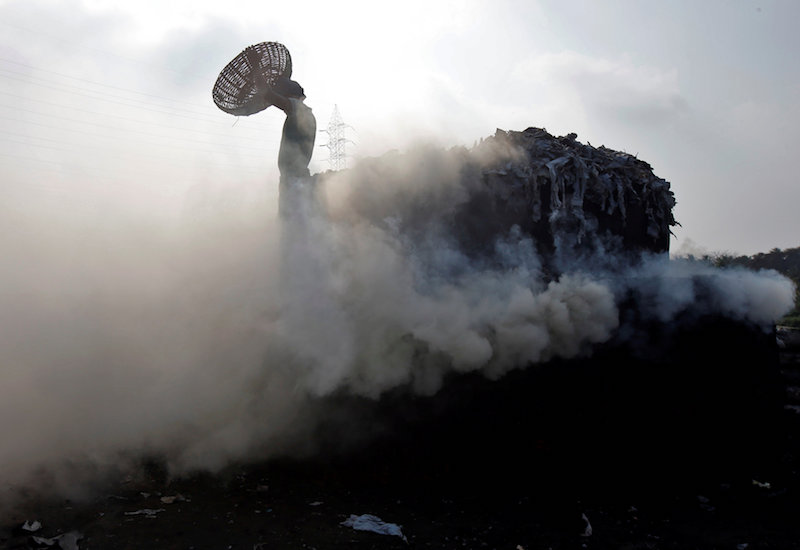The Indian leather industry is coming under fire for human rights violations, unsafe working practices, and extreme health hazards.
A study, completed by human rights organization the India Committee of the Netherlands, (ICN) has found that 2.5 million Indian leather workers work incredibly long hours for little pay in an environment speckled with hazardous fum

es, all to create fine leather goods for Western brands.
The report studied the primary leather hubs of Agra in the north, Kolkata in the east, and Vaniyambadi-Ambur in the south and found that these plants make everything from garments and accessories to high-quality footwear for export to many different Western countries. India’s leather industry is the second largest in the world and 90
% of its footwear exports eventually end up in the European
Union.
Top grain leather has a thickness from the top 3/64 of an inch or .9 mm to 1.5 mm of the outer grain of the leather hide. But to get leather to be so thin, it must be cured and stretched multiple times, which gives the appearance ofhigh-quality and exotic to Western consumers.
ICN’s report showed that there were serious human safety risks in every leather plant in the country. “Accidents regularly occur with machine operators getting trapped, workers cleaning underground waste tanks suffocating from toxic fumes, or workers drowning in toxic sludge at the tannery premises,” it reported.
In addition, these workers did not receive a living wage, had no social security benefits, and received little to no health care. Research in the report shows thatthese tannery employees regularly suffer from fever, eye inflammation, cancer, and other skin diseases, but since they have no access to health care, the workers must let these conditions develop untreated.
India’s social and economic standards are based off a caste system, with the majority of leather workers being from the Dailts lower caste. This caste is primarily made up of minority Muslims, who are considered as dirty and polluting to the nation.
At the end of their report, the ICN called for some of the major fashion brands to use their resources as a means to end these astonishing human rights violations. As a way to do this, they suggest that these companies should increase their traceability from the lowest tanneries to the higher-up subcontractors to fix the root of the issue.

You must be logged in to post a comment Login